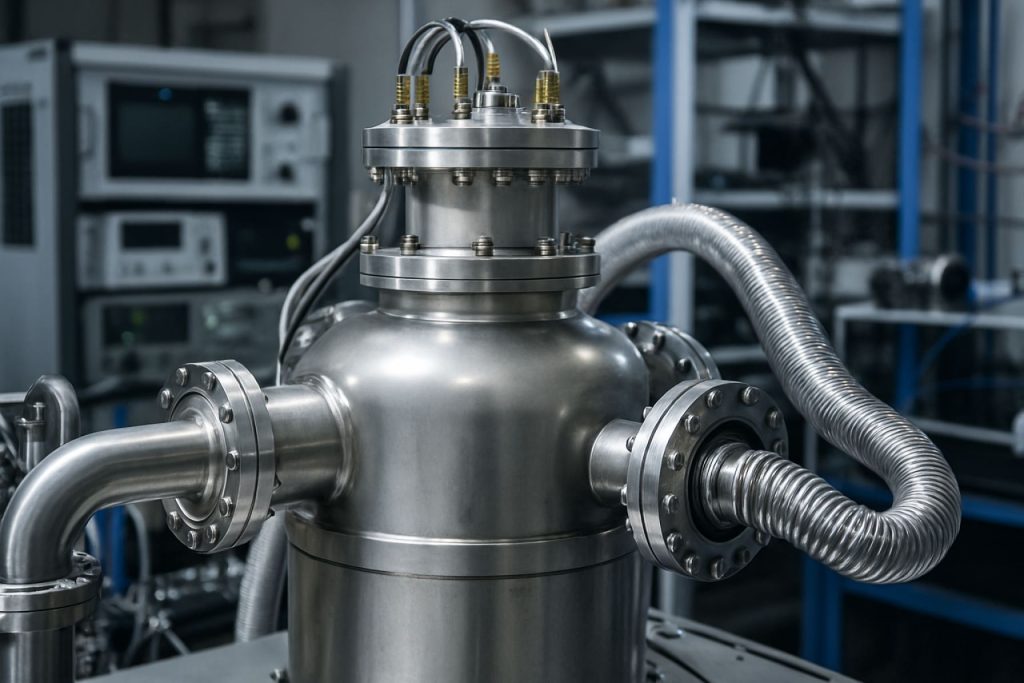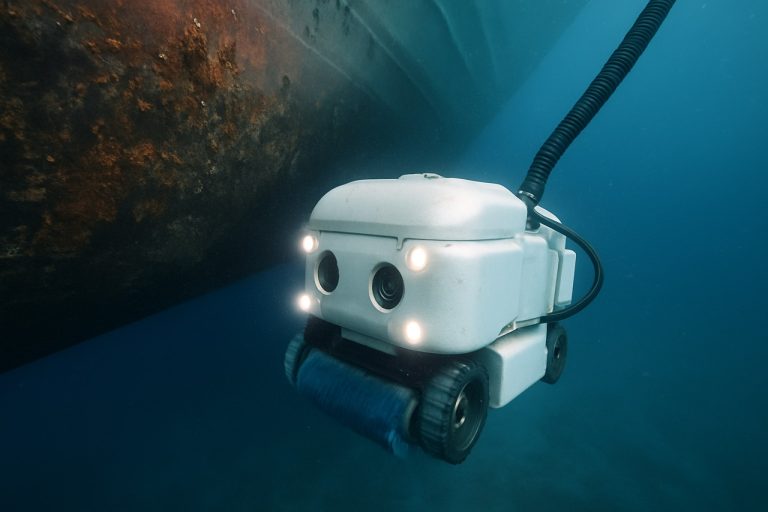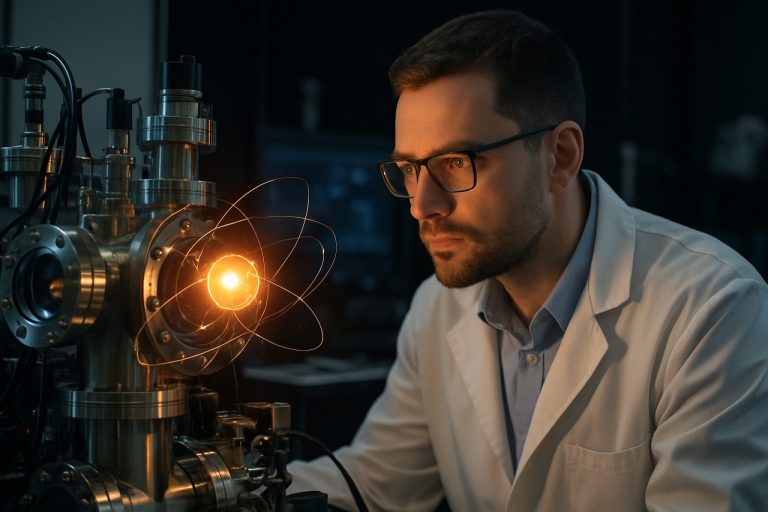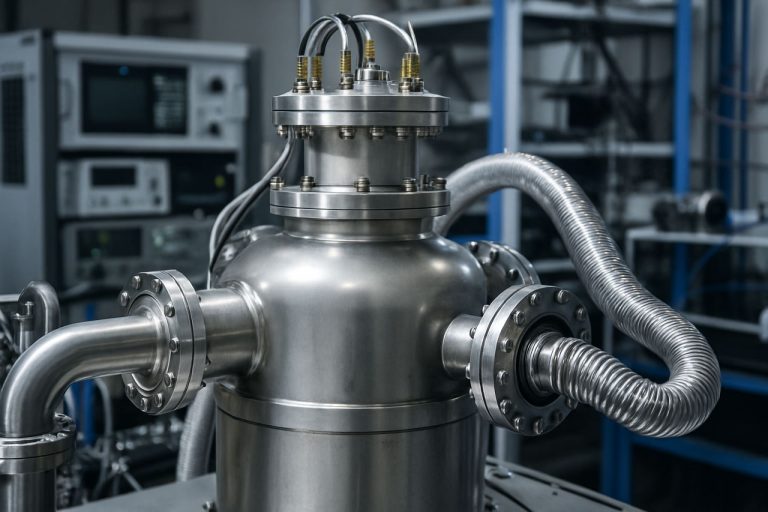
Unlocking the Future of Cryogenic Vacuum Systems Engineering in 2025: Critical Innovations, Key Players, and Game-Changing Market Trends You Can’t Afford to Miss.
- Executive Summary: 2025 and Beyond
- Market Size and Growth Forecast through 2030
- Latest Technological Advances in Cryogenic Vacuum Systems
- Key Industry Players and Strategic Initiatives (Sources: leybold.com, edwardsvacuum.com, agilent.com)
- Emerging Applications Across Industries: From Quantum Computing to Space Exploration
- Global Supply Chain and Manufacturing Trends
- Regulatory Landscape and Standards (Sources: asme.org, ieee.org)
- Challenges and Opportunities in System Integration
- Investment Hotspots and Funding Trends
- Future Outlook: Disruptive Innovations and Competitive Landscape
- Sources & References
Executive Summary: 2025 and Beyond
Cryogenic vacuum systems engineering continues to emerge as a critical pillar underpinning advancements in sectors such as quantum computing, particle physics, fusion research, and space exploration. As of 2025, the demand for systems capable of ultra-high vacuum (UHV) and cryogenic temperatures is intensifying, driven largely by large-scale research initiatives and the scaling up of commercial quantum and superconducting technologies.
The global landscape is shaped by several flagship projects and influential industry players. In high-energy physics, facilities like CERN’s Large Hadron Collider remain reliant on sophisticated cryogenic vacuum infrastructure to sustain superconducting magnets and ensure particle beam integrity. Upgrades to accelerator facilities in the EU, US, and Asia are expected to drive procurement and innovation through at least 2030. Similarly, national fusion programs—including ITER and emerging private sector fusion start-ups—are fueling demand for robust, high-purity cryogenic vacuum environments to support plasma confinement and experimental integrity.
Major manufacturers and integrators such as Leybold GmbH, Oerlikon (through its Oerlikon Leybold Vacuum division), and Edwards Vacuum continue to dominate the market for both component-level and turnkey cryogenic vacuum solutions. These firms are recognized for their investments in R&D targeting energy efficiency, automation, and digital controls to address both technical challenges and sustainability imperatives. Cryomech, based in the United States, remains a leader in cryocooling and helium refrigeration systems, supporting both research and industrial clients. Pfeiffer Vacuum is also notable for its strong global footprint and diverse cryogenic vacuum product lines.
Technical trends for 2025 and beyond include the integration of advanced sensors and remote diagnostics to enable predictive maintenance and minimize downtime, as well as the adoption of new materials to further reduce outgassing and thermal loads. The proliferation of quantum computing research—exemplified by investments from technology leaders such as International Business Machines Corporation (IBM) and Intel Corporation—is generating new requirements for ultraclean, vibration-free cryogenic environments at scale.
Looking forward, the sector is poised for moderate but sustained growth, with strategic investments from both public science programs and private technology developers. Supply chain constraints for specialty materials and helium remain a consideration, but ongoing initiatives to improve recycling and system efficiency are mitigating risks. The outlook for cryogenic vacuum systems engineering is robust, with a focus on innovation and adaptability as use cases diversify and technical specifications become ever more demanding.
Market Size and Growth Forecast through 2030
The global market for cryogenic vacuum systems engineering is poised for robust growth through 2030, driven by surging demand in scientific research, semiconductor manufacturing, space exploration, and medical applications. As of 2025, leading manufacturers and suppliers are reporting increased orders and expanded project pipelines, reflecting both public and private sector investments in high-precision, ultra-high-vacuum (UHV) and cryogenic technologies.
One of the key drivers is the expansion of large-scale scientific infrastructure projects, such as particle accelerators, fusion reactors, and synchrotron light sources. Organizations like Linde and Air Liquide, both of which possess extensive cryogenic engineering portfolios, are actively supplying turnkey vacuum and low-temperature systems for these facilities. These projects require highly customized solutions — including vacuum chambers, transfer lines, cryopumps, and helium refrigeration — and typically involve multi-million-dollar contracts over several years.
In the semiconductor sector, ongoing technological advancements such as extreme ultraviolet (EUV) lithography and quantum computing devices are fueling demand for advanced cryogenic vacuum solutions. Companies like Leybold (a subsidiary of Atlas Copco Group), Pfeiffer Vacuum, and Edwards Vacuum are expanding production capacities and enhancing R&D to address the specific requirements of ultra-clean, vibration-free, and temperature-stable environments. Notably, these firms are partnering with chip manufacturers and research consortia to co-develop next-generation vacuum technologies.
Cryogenic vacuum systems also play a significant role in the aerospace industry, particularly in rocket testing, satellite simulation, and propulsion systems. Entities such as NASA and European Space Agency continue to issue contracts for new and upgraded cryogenic vacuum chambers, often collaborating with leading system integrators and component suppliers.
Looking ahead to 2030, market participants anticipate steady compound annual growth rates (CAGR) in the high single digits. This outlook is supported by persistent R&D activities, the proliferation of high-energy physics and quantum technology projects, and expanding industrial-scale deployments. Furthermore, sustainability considerations and efficiency improvements are prompting investments in helium recovery, closed-loop cooling, and energy-saving cryopump designs, setting the stage for continued innovation and market expansion in cryogenic vacuum systems engineering.
Latest Technological Advances in Cryogenic Vacuum Systems
The field of cryogenic vacuum systems engineering has experienced notable technological progress entering 2025, driven largely by expanding applications in quantum computing, particle physics, superconductivity research, and space sciences. One of the most prominent trends is the integration of advanced materials and digital monitoring technologies to improve vacuum integrity and operational reliability. For instance, the adoption of low-outgassing materials and sophisticated surface treatments is allowing for better vacuum levels essential for sensitive applications such as superconducting qubits and cryomodules.
Leading manufacturers are responding with novel cryopump designs and enhanced vacuum insulation technologies. Leybold, a longstanding innovator, has introduced next-generation cryopumps employing optimized helium management and smart diagnostics to minimize downtime and maintenance. These systems are now equipped with embedded sensors and connectivity features, supporting real-time performance tracking and predictive maintenance—capabilities increasingly demanded by users in semiconductor manufacturing and research laboratories.
Another significant advance is the use of magnetic refrigeration and pulse tube cryocoolers, which reduce vibration and electromagnetic interference compared to traditional Gifford-McMahon or Stirling cryocoolers. Companies such as Oxford Instruments are pioneering these technologies, enabling quieter, more stable environments critical for quantum computing and ultra-sensitive detector arrays. These solutions are now being integrated into complex vacuum assemblies for new-generation quantum processors and space-borne instruments.
Automation and modularity are also reshaping cryogenic vacuum systems. Pfeiffer Vacuum has launched modular vacuum platforms with digital interfaces that facilitate integration into larger process control schemes, allowing users to remotely monitor and adjust parameters for optimal performance. This modular approach is particularly beneficial for large-scale physics experiments, such as those at CERN, and for the expanding commercial satellite sector.
Looking ahead, industry focus in the next several years will be on further reducing helium consumption—critical due to ongoing supply constraints—and on developing recyclable, environmentally friendly insulation materials. Collaborative efforts between system suppliers, such as Cryomech, and end users aim to address these challenges through joint R&D programs and pilot projects. The outlook is for continued rapid evolution, as user requirements in quantum technology, aerospace, and fusion research drive demand for even higher vacuum performance, lower energy consumption, and smarter control systems.
Key Industry Players and Strategic Initiatives (Sources: leybold.com, edwardsvacuum.com, agilent.com)
The landscape of cryogenic vacuum systems engineering in 2025 is defined by a concentration of expertise among a handful of global leaders and a strategic push toward innovation, sustainability, and integration with emerging applications such as quantum computing, particle physics, and advanced semiconductor manufacturing. Key industry players—including Leybold GmbH, Edwards Vacuum, and Agilent Technologies—are shaping the sector’s trajectory through both technological advancements and targeted partnerships.
<Leybold GmbH, part of the Atlas Copco Group, continues to set benchmarks in the engineering and production of cryogenic pumps, helium compressors, and integrated vacuum solutions. In 2025, Leybold is focusing on enhancing the efficiency and reliability of its cryopump systems to meet stringent requirements of large-scale research facilities, such as particle accelerators and fusion energy projects, as well as the scaling needs of quantum technology manufacturers. The company’s ongoing investments in modular system design and digital monitoring aim to minimize downtime and optimize energy consumption across complex installations.
<Edwards Vacuum, a division of Atlas Copco, holds a significant footprint in the supply of vacuum and cryogenic systems for the semiconductor, industrial, and scientific sectors. In recent years, the company has prioritized the development of sustainable vacuum technologies, with emphasis on reducing greenhouse gas emissions and energy use in cryogenic operations. Edwards is particularly active in collaborations with leading chipmakers and national laboratories, responding to the demand for ultra-high vacuum (UHV) and extreme high vacuum (XHV) environments required for next-generation lithography and quantum experimentation. Their strategic initiatives include expanding service networks and launching advanced cryopump platforms tailored for high-throughput manufacturing.
<Agilent Technologies brings a strong background in analytical instrumentation and vacuum technology to the cryogenic vacuum systems market. The company is leveraging its strengths in materials science and vacuum analytics to introduce new lines of cryopumps and vacuum monitoring solutions. For 2025 and beyond, Agilent’s focus is on supporting the miniaturization of cryogenic components and the integration of advanced diagnostics, catering to the evolving needs of quantum research and nanotechnology fabrication. Strategic moves include partnerships with major research consortia and investments in AI-driven system management for predictive maintenance and process optimization.
Looking ahead, these key players are expected to deepen their investments in R&D, with a particular focus on cryogen-free (dry) technologies, smart system integration, and digital services. The competitive landscape is shaped by the race to support transformative industries—most notably quantum computing and sustainable energy research—with robust, scalable, and energy-efficient cryogenic vacuum engineering.
Emerging Applications Across Industries: From Quantum Computing to Space Exploration
Cryogenic vacuum systems engineering is witnessing robust growth and diversification in emerging high-tech sectors as 2025 unfolds. The demand for advanced cryogenic vacuum solutions is being driven by an expanding range of industrial applications, most notably in quantum computing, space exploration, medical imaging, and high-energy physics.
In quantum computing, cryogenic vacuum systems are indispensable for creating ultra-low-temperature environments required by superconducting qubits and other quantum devices. As leading technology companies and research institutions race to scale up quantum processors, the need for reliable, vibration-free, and contamination-free cryogenic vacuums is intensifying. Companies such as Oxford Instruments and Bluefors are at the forefront, supplying dilution refrigerators and cryogen-free systems that operate close to absolute zero. These systems are essential for quantum computers’ stable and error-free operation, and both firms have announced capacity expansions and technological enhancements slated for 2025 to address surging demand from global research and commercial clients.
In the realm of space exploration, cryogenic vacuum engineering remains vital for the development and ground-testing of spacecraft components, propulsion systems, and satellite payloads. Vacuum chambers capable of simulating the extreme cold and vacuum of outer space are in high demand. Leybold and Pfeiffer Vacuum are recognized leaders, supplying specialized cryopumps and vacuum chambers used by space agencies and satellite manufacturers. The ongoing proliferation of private and public space missions, including lunar and Mars exploration programs, is fuelling investments in advanced vacuum infrastructure through 2026 and beyond.
Medical and life sciences are also benefiting from advances in cryogenic vacuum systems. Magnetic resonance imaging (MRI) scanners, for example, rely on superconducting magnets cooled by cryogenic technology. Cryomech is a prominent supplier in this field, providing cryocoolers and helium management systems for both medical and laboratory applications. With continued growth in medical imaging and biobanking, demand for robust cryogenic vacuum engineering solutions is expected to rise.
Looking ahead, the next few years will likely see further integration of automation, remote monitoring, and advanced materials into cryogenic vacuum platforms. This is in response to end users’ requirements for greater operational efficiency, reliability, and sustainability. Industry leaders are investing in R&D to develop next-generation systems with lower helium consumption, enhanced energy efficiency, and digital diagnostics, positioning cryogenic vacuum engineering as a key enabler of innovation across multiple sectors from 2025 onward.
Global Supply Chain and Manufacturing Trends
The global supply chain and manufacturing landscape for cryogenic vacuum systems is experiencing significant evolution in 2025, responding to increasing demand from sectors such as quantum computing, particle accelerators, space technology, and advanced medical imaging. Cryogenic vacuum systems, which combine ultra-low temperatures with high-vacuum environments, are critical for applications requiring minimized thermal noise and molecular contamination.
A notable trend in 2025 is the realignment and diversification of supply chains for key components, including vacuum pumps, cryostats, and superconducting materials. Leading manufacturers such as Leybold GmbH and Edwards Vacuum are expanding their global manufacturing footprints, building new facilities in the United States, Europe, and Asia to mitigate risks associated with geopolitical tensions and logistics disruptions. These companies are also investing in local sourcing and collaborative agreements with regional parts suppliers to reduce lead times and enhance supply chain resilience.
Another key development is the integration of digital manufacturing technologies, such as real-time monitoring of cryogenic component fabrication and predictive maintenance for vacuum system subassemblies. Pfeiffer Vacuum, for instance, is deploying advanced analytics and IoT connectivity across its production lines to improve quality control and facilitate rapid scaling of output to meet surging project requirements in semiconductor and research sectors. The adoption of automation and artificial intelligence is helping manufacturers maintain throughput and consistency despite ongoing skilled labor shortages.
On the material supply side, producers of high-purity metals and specialized ceramics essential for cryogenic vacuum systems are ramping up capacity. Oxford Instruments and Cryomech are both reporting increased investments in supply agreements with metal refiners and component fabricators, responding to heightened demand for superconducting magnets and ultra-high vacuum seals. These upstream collaborations are crucial as end-users in scientific research, such as national laboratories and large-scale collider projects, push for faster delivery and higher reliability.
Looking ahead, the outlook for the next few years is shaped by ongoing efforts to localize critical manufacturing and diversify sourcing, especially for rare and precision-engineered components. Market leaders are expected to continue investing in automation, modular system design, and sustainable manufacturing practices, while building redundancy into their supply chains. The ongoing expansion of global R&D, particularly in Asia and North America, will further drive demand for advanced cryogenic vacuum systems and prompt continuous innovation in both supply chain strategies and manufacturing technologies.
Regulatory Landscape and Standards (Sources: asme.org, ieee.org)
Cryogenic vacuum systems engineering operates under a complex and evolving regulatory landscape, with standards ensuring safety, reliability, and performance across applications ranging from particle accelerators to medical imaging and aerospace. In 2025, the increasing adoption of advanced cryogenic technologies for quantum computing, fusion research, and space exploration is prompting both the revision of existing standards and the development of new ones.
The American Society of Mechanical Engineers (ASME) remains central in defining pressure vessel codes—most notably the ASME Boiler and Pressure Vessel Code (BPVC)—that govern the safe design and operation of vacuum vessels used in cryogenic environments. Recent updates emphasize enhanced material traceability, weld integrity, and leak detection, reflecting the growing diversity of cryogens and operational pressures found in next-generation superconducting and high-energy physics facilities. ASME’s codes are widely adopted in the United States and form the basis for compliance in many international projects.
Electrical and electronic aspects of cryogenic vacuum systems are addressed by the Institute of Electrical and Electronics Engineers (IEEE). IEEE standards focus on the design, testing, and electromagnetic compatibility of control and instrumentation systems critical to the safe operation of cryogenic equipment. With the surge in cryogenic electronics for quantum and sensor applications, IEEE has initiated working groups in 2024–2025 to develop guidance on high-reliability wiring, signal integrity, and thermoelectric effects at ultra-low temperatures.
Internationally, harmonization efforts are underway. ASME is collaborating with the International Organization for Standardization (ISO) and the European Committee for Standardization (CEN) to bridge differences in vacuum vessel and piping codes, a process accelerated by global scientific collaborations and multinational cryogenic infrastructure projects. The outlook for 2025–2027 indicates further convergence, as large-scale projects—such as next-generation fusion reactors and space telescopes—demand uniform standards for procurement and operation.
Going forward, regulatory authorities are expected to tighten requirements for environmental controls, especially regarding the containment and recovery of helium and other rare gases. There is a growing push for lifecycle-based standards that address not only construction and operation but also decommissioning and recycling. Stakeholders, including manufacturers, end-users, and regulators, are increasingly participating in standards development, ensuring that future regulations reflect both technological innovation and operational realities.
Challenges and Opportunities in System Integration
Cryogenic vacuum systems engineering faces a dynamic landscape in 2025, shaped by both formidable integration challenges and significant opportunities. As these systems are critical to particle accelerators, quantum computing, superconducting applications, and space science, the demands on their reliability, efficiency, and scalability have never been higher. System integration—the process of harmonizing cryogenic cooling, vacuum pumping, instrumentation, and control infrastructure—remains a key area of focus for both research institutions and industrial suppliers.
One of the chief challenges is the need for ultra-high vacuum (UHV) environments at cryogenic temperatures. Achieving pressures below 10⁻⁹ mbar while maintaining temperatures below 4 K is technically complex, requiring advanced materials, hermetic sealing, and robust thermal management. Companies like Oerlikon are developing sophisticated turbomolecular and cryopump technologies, emphasizing modularity and integration readiness to address these demands. Meanwhile, Leybold, a historical innovator in vacuum technology, continues to invest in digital monitoring and predictive maintenance, vital for integrated system reliability.
Another integration challenge is the management of thermal and mechanical stresses. As components cycle between room and cryogenic temperatures, differential contraction can compromise vacuum integrity and alignment. Suppliers such as Pfeiffer Vacuum are advancing their component designs, focusing on materials with matched coefficients of thermal expansion and offering custom engineering for interfaces with superconducting magnets or detectors.
Control system integration, especially in large scientific installations, poses another hurdle. Interfacing cryogenic and vacuum subsystems with facility-wide automation requires standardization in communication protocols and real-time diagnostics. Organizations like CERN are pioneering open-source control frameworks and collaborative engineering platforms, influencing industry standards and fostering interoperability among international partners.
Despite these challenges, the outlook for the next several years is optimistic. The rapid scaling of quantum computing and fusion energy projects is driving unprecedented investment. Companies such as Oxford Instruments are expanding their cryogenic vacuum platforms with plug-and-play compatibility, targeting both research and commercial markets. Likewise, collaborative innovation—between system integrators, component manufacturers, and end users—is accelerating the adoption of digital twins and simulation-driven engineering, streamlining commissioning and maintenance cycles.
Overall, while system integration in cryogenic vacuum engineering in 2025 faces technical and operational complexities, it also benefits from cross-sector collaboration, digital transformation, and surging demand from next-generation technologies. The sector is poised for rapid evolution, balancing reliability with flexibility as it underpins critical advances in science and industry.
Investment Hotspots and Funding Trends
Cryogenic vacuum systems engineering is experiencing a surge in investment and funding activity, driven by the convergence of quantum technologies, superconducting applications, and the expanding needs of the semiconductor and space sectors. In 2025, venture capital and strategic corporate investments are targeting firms specializing in advanced cryopump technologies, ultra-high vacuum (UHV) solutions, and integrated cryogenic platforms.
One notable investment hotspot is the quantum computing ecosystem, where stable cryogenic vacuum environments are essential for superconducting qubit operation. Leading quantum hardware companies, such as IBM and D-Wave Systems, are partnering with cryogenics specialists to develop scalable, low-vibration cooling and vacuum solutions. This demand is spurring funding for established suppliers like Leybold and Oerlikon, who are expanding their R&D and manufacturing capabilities to deliver next-generation UHV systems tailored for quantum labs and data centers.
In addition, the semiconductor industry’s push for smaller process nodes and EUV lithography is driving investment into vacuum and cryogenic infrastructure. Major players such as ASML and Lam Research are collaborating with cryogenic vacuum system manufacturers to enhance process stability and reduce contamination in chip fabrication environments. This has led to significant funding rounds for companies developing high-throughput cryopumps and advanced vacuum instrumentation.
The space sector is another area of rising capital flow. Agencies and private firms—including European Space Agency (ESA) and SpaceX—are investing in cryogenic vacuum test chambers for satellite and payload qualification under simulated space conditions. This is boosting demand for turnkey vacuum systems with extreme low-temperature performance, creating opportunities for both established manufacturers and innovative startups.
Public funding initiatives are also playing a role. For instance, the European Union’s Horizon Europe program and similar US Department of Energy projects are channeling grants into cryogenic and vacuum technology research, aiming to underpin advances in energy, quantum, and aerospace sectors.
Looking ahead, the next several years are expected to see continued growth in both private and public investment. Mergers, acquisitions, and strategic alliances are likely as companies seek to consolidate expertise and scale up production. Key players such as Edwards Vacuum and Pfeiffer Vacuum are anticipated to remain at the forefront, leveraging their broad portfolios and global reach to capture rising demand across diverse high-tech industries.
Future Outlook: Disruptive Innovations and Competitive Landscape
Cryogenic vacuum systems engineering is at a pivotal juncture as the industry approaches 2025, with disruptive innovations and a rapidly evolving competitive landscape shaping its future. Driven by demand from quantum computing, particle physics, medical imaging, and space science, the sector is witnessing intensified R&D and commercialization initiatives, particularly in the domains of ultra-high vacuum (UHV) technology, cryocoolers, and superconducting systems integration.
One key trend is the integration of advanced cryocooler technologies that allow for more compact, energy-efficient, and reliable cryogenic vacuum operation. Notably, Oxford Instruments, a global leader in cryogenics and superconductivity, has accelerated development of closed-cycle dilution refrigerators and pulse tube cryocoolers, supporting next-generation quantum computers and high-sensitivity detectors. Their systems are increasingly specified for ultra-low vibration and minimal magnetic interference, critical for quantum applications.
Similarly, Linde and Air Liquide are implementing automation and remote monitoring in industrial-scale cryogenic vacuum systems. These advancements enable predictive maintenance and enhanced uptime, a significant step forward for continuous-operation environments such as semiconductor fabrication and fusion energy research. Both companies are investing in digital twin technologies for simulation and real-time management, contributing to higher system reliability and operational transparency.
In research and high-energy physics, CERN continues to set benchmarks with the cryogenic vacuum infrastructure of its particle accelerators. Their ongoing upgrades toward the High-Luminosity LHC project include new modular vacuum cryostat designs and improved helium distribution systems, paving the way for more robust, scalable solutions across the industry. These innovations are expected to trickle down into commercial vacuum system products over the next few years.
The competitive landscape is also marked by new entrants and strategic collaborations. Companies such as Leybold and Pfeiffer Vacuum are partnering with research institutions and major OEMs to co-develop next-generation turbomolecular and cryopump systems optimized for UHV and extreme temperature cycling. These partnerships are accelerating the pace at which laboratory-scale breakthroughs are commercialized.
Looking ahead, the cryogenic vacuum systems sector is expected to see ongoing miniaturization, increased modularity, and cross-sector adoption, particularly in quantum technologies and green energy projects. With global players investing in AI-driven diagnostics and sustainable cooling agents, the field is positioned for transformative growth and heightened competition through 2025 and beyond.
Sources & References
- Leybold GmbH
- Oerlikon
- Edwards Vacuum
- Cryomech
- Pfeiffer Vacuum
- International Business Machines Corporation (IBM)
- Linde
- Air Liquide
- NASA
- European Space Agency
- Oxford Instruments
- Bluefors
- American Society of Mechanical Engineers (ASME)
- Institute of Electrical and Electronics Engineers (IEEE)
- CERN
- IBM
- Leybold
- Oerlikon
- ASML
- European Space Agency (ESA)
- Edwards Vacuum
- Pfeiffer Vacuum



